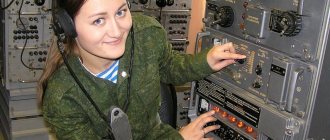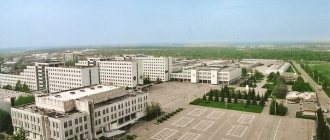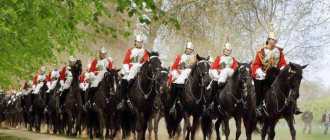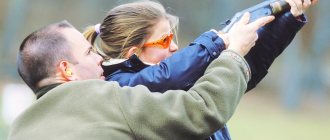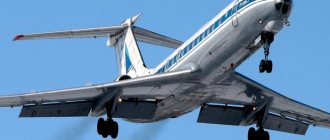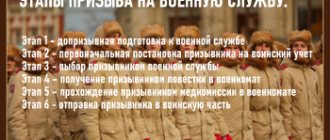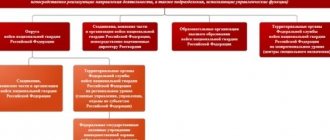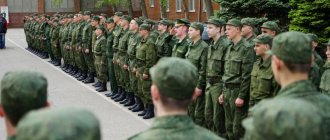The Presidential Regiment of Russia is a unique military unit that is part of the Federal Security Service (FSO) of the state. The main goal of the regiment is to ensure the safety of the country's top officials and the safety of Kremlin values.
Therefore, the best of the best are selected for the service, and to get here, you will have to go through more than one selection stage. But this does not bother the young guys in Russia, because after serving in the Presidential Regiment, many tempting career prospects open up before them.
Functions
The Presidential Regiment, due to its specificity, is stationed directly in the Moscow Kremlin, which was the reason for the appearance of its second name - Kremlin. Each of those who served here for at least a year can confidently consider themselves to be residents of the Kremlin.
These guys are known by sight not only to all citizens of our country, but also to other countries. When viewing official chronicles from Moscow, the stately figures of young military men frozen at attention are always clearly visible. These are soldiers of the Kremlin regiment, or the elite of the Russian Army.
In addition to the above main functions, this special unit also performs others, such as, for example, participation in the deployment of foot and horse guards on Cathedral Square, duty at the Tomb of the Unknown Soldier and other events of national importance.
Soldiers of the regiment are almost always present at international military festivals held in Germany, Denmark, Great Britain, Norway, Switzerland and other European countries. You can get to the location of the unit in two ways - from the Kremlin and directly from the street or Red Square, passing the Kremlin gate through the extension connecting to the Nikolskaya Tower.
It is there, beyond the metal detectors, that there is a passage to the Arsenal of the Moscow Kremlin - the greatest architectural monument of the 18th century, which became the “headquarters” for employees of the Presidential Regiment.
Zeughaus, built by order of Peter the Great, served as a storage facility for weapons and ammunition and was considered a museum of military glory. Its design and interior are quite austere, and the warehouse consists of long corridors leading to a large number of functional objects. The walls of the room are laconically painted beige, and the floors are covered with carpets.
The age of the building can be guessed from the tall vaulted ceilings, more than 4 meters high, and the almost three-meter thick walls. The regiment's parade ground and sports hall, where soldiers spend a significant part of their time, are also located within the closed perimeter of the Arsenal's spacious courtyard.
Kremlin soldiers undergo drill and physical training in the Arsenal courtyard
About tasks
Presidential troops provide security and protection of historical and strategic Kremlin sites. These include the Eternal Flame, the Tomb of the Unknown Soldier at the Kremlin Wall and all important institutions located on the territory. In addition, some take part in various protocol events.
Presidential troops as part of the Federal Security Service provide protection to the country's top officials. The regiment includes ten companies, which are subordinate directly to the President. Many experts argue that the Kremlin regiment was formed solely for beauty. The constitutional system is also protected by the National Guard, created on the basis of the Internal Troops of the Ministry of Internal Affairs of Russia. They serve in these troops on a contract basis.
Regiment structure
The Presidential Regiment at the beginning of 2022 includes a headquarters, an Honorary Cavalry Escort, 3 battalions, 2 Special Guard companies and an operational reserve battalion. Each of the listed divisions has its own specifics. The 1st and 2nd battalions consist of three companies each (3rd, 4th, 5th are included in the first, and 7th, 8th, 9th are included in the second).
The purpose of the 3rd battalion is to provide guard service, including post No. 1, and therefore it is staffed by the 1st special guard company, the 11th and the automobile. The cavalry honor escort is in fact also a battalion that is part of the regiment, and it includes the 10th company, 2 cavalry squadrons and a support company.
The latter unit is an integral part, since horses and logistics require maintaining constant combat readiness. An operational reserve battalion functions as a kind of storage facility, which is used when a difficult or unforeseen situation occurs in a certain area or as reinforcement.
About the history of formation
After the October Revolution, the Bolshevik government was in a very difficult position and was systematically exposed to great danger. The new government needed serious and disciplined protection. The seat of the Bolshevik government became the Moscow Kremlin, which was guarded by Latvian riflemen from March to September 1918. Soon they were replaced by military personnel of the Moscow Higher Military Command School of the Red Army, which some time later was reorganized into the All-Russian Central Executive Committee, which later became the 1st Soviet United Military School of the Red Army. The All-Russian Central Executive Committee guarded the Kremlin until 1935. In October, Lefortovo became the location of the All-Russian Central Executive Committee, and the defense of the Kremlin was entrusted to the Special Purpose Battalion, which from that moment left the subordination of the People's Commissariat of Defense. The battalion transferred to the NKVD department. A year later it was officially named the NKVD Special Forces Regiment. Unofficially it was called Kremlinsky. During the Soviet-Finnish War, soldiers of the regiment took part in hostilities. During the Great Patriotic War they repelled Wehrmacht air raids. In 1973, the regiment was officially assigned the status of “Kremlin”. Since 1975, its military personnel have been awarded a distinctive badge for impeccable service, combat and political training.
Specifics of recruit selection
Considering the specifics of serving in the Kremlin regiment, it is quite difficult to get into it. The selection of applicants is very strict. The call comes from 48 regions of the country. Major General Oleg Galkin, commander of the Kremlin regiment, proudly claims that young people from many regions of Russia are currently serving here as conscripts.
Among the regimental soldiers and sergeants there are natives of all, even very remote regions of the country. Colonel Roman Lotvin, head of personnel affairs, says that officers go on business trips long before the start of spring and autumn conscription.
And there, directly on the ground, they carry out a preliminary selection of potential candidates so that the lists of applicants for conscripts are ready for the launch of the campaign. The annual conscription service is divided into 2 stages, each of which ends with tests and exams.
The most successful employees in their studies are awarded with awards intended for this purpose, such as “Kremlin Regiment” and “Excellence in the FSO.”
How to become a Kremlin member
As with the recruitment into the historically well-known Semenovsky regiment, which accepted only tall, blue-eyed, brown-haired men, there are enough requirements for the future soldiers of the Kremlin. They are specified in the government regulation of 1999 and in other provisions:
Division named after Dzerzhinsky
- conscript height – 175–190 cm;
- normal ratio of height and body weight;
- visual acuity – 0.7 without correction in both eyes with adequate color perception;
- hearing – the perception of whispers by both ears at a distance of at least 6 meters.
Another important condition is the complete absence of defects, for example, birthmarks, scars on the face, hands and other open areas of the body. After all, indeed, a soldier standing on the Guard of Honor, “decorated” with piercings or tattoos, will look at least inadequate. But dynasties are welcomed, and quite often it is the honor to serve twins in the regiment.
Kremlin members take part in all state-scale events
Guys who have completed secondary education (higher education is another plus in favor of the conscript), who have good physical shape and training and, what is also important, an unblemished biography, are enlisted in the service. In addition, it is necessary that the future recruit comes from a complete family, that is, his parents are not divorced.
Not only the conscripts themselves, but also their relatives up to the third generation should not have a criminal record. In addition, young people who are registered in dermatovenerological, psychoneurological, and drug treatment clinics, as well as those who have police records, have no chance of becoming Kremlin members.
Place of residence also plays an equally important role - for natives of Moscow it is almost impossible to get into such a service; on the contrary, priority goes to those who live further from the capital. Last year, for example, out of 4,000 guys called up from the Kursk region, only 40 people returned to serve here, and even fewer from the Krasnoyarsk Territory - 20.
The same number were recruited by the Kremlin from the Kuban, although in total 5,500 soldiers were recruited from this region. And not one of the 6 thousand recruits was called up from Moscow itself. Recruits from Novosibirsk and the region are especially valued, since their endurance and ability to stand still for a long time have long been noted.
Knowledge of foreign languages is not a prerequisite for entering the service. However, as Colonel Lotvin says, a “polyglot” at a post where there are many tourists, for example, near the Kutafya Tower, will most likely pleasantly amaze foreign guests.
When recruiting for guard companies, a strong argument is mastery of martial arts, since such young men have good stretching and are able to beautifully walk along the parade ground without any extra effort, raising their legs high.
At the same time, the main condition for enrollment in the regiment is the desire of the conscript himself. At the interview, he needs to clearly say why he wants to serve in the Kremlin. It should be clarified that the Kremlin regiment is not exactly an army or a regiment. The command of this structure is exercised not by a colonel, but by a general.
At the moment, this is Major General Oleg Galkin, and the unit itself is not part of the Ministry of Defense, but of the FSO and is more comparable in size to a deployed motorized rifle brigade. This is one of the reasons for such strict requirements.
Kremlin guard
On April 8, a unique military unit – the Presidential Regiment of Russia – celebrates its 80th anniversary. It is part of the Federal Security Service of the Russian Federation. This regiment ensures the safety of top officials of the state and the safety of Kremlin values. The regiment includes three battalions, two companies of the Special Guard, an Honor Cavalry Escort and special forces. Each division has its own characteristics and specifics.
You can get to the location of the unit not only from the Kremlin, but also directly “from the street”, bypassing the Kremlin gates - from Red Square, through the extension to the Nikolskaya Tower. Beyond the metal detectors there is a passage to an architectural monument of the 18th century - the Arsenal of the Moscow Kremlin, chosen as the “headquarters” of the Presidential Regiment.
Zeughaus, built by order of Peter I, was supposed to serve as a warehouse for weapons, ammunition, and a museum of military glory.
The Arsenal inside is very ascetic: long corridors with many doors (“Secret Service”, “Clothing Service”, “Classroom”, “Photography Lab”, “Guard Room”, “Unit History Room” ...), beige-painted walls, a carpet runner. The age of the building is revealed by vaulted ceilings more than four meters high and walls almost three meters thick.
In the closed perimeter of the Arsenal courtyard there is a parade ground and a regiment gym.
About the Kremlin members, their traditions and features of service in the Presidential Regiment - in a TASS special project. FROM RISE TO COMBINATION
The life of military personnel is subject to a clear and strict routine: each unit has its own. The corresponding tables are placed on stands at posts inside the Arsenal, so that at any time you can check whether the actual state of affairs coincides with what is written in the schedule. The same rise time for all units is 6:30.
This is followed by half an hour of exercise and a run around the Kremlin in any weather. To maintain the physical fitness of military personnel, gymnastic equipment has even been installed in the Tainitsky Garden, away from the eyes of tourists.
40 minutes are allotted for “toilet, making beds and establishing internal order,” and 20 for breakfast. Before lunch, there are mandatory four hours of classes and one hour of “care of weapons.” After lunch, three more hours of classes, independent preparation, dinner, evening walk.
The schedule also includes “time for personal needs” - a total of two hours and 40 minutes a day, during which you can go to the library, watch TV, or just relax. Lights out at 22:30.
Three times a week - on Thursdays, Saturdays and Sundays - the club is visited in full dress. The playbill includes Soviet and Russian war and patriotic films, concerts, and meetings with veterans. Among the latest programs, the soldiers remember with particular pleasure the performance of magicians, the concert of Vladimir Vinokur and the conversation with cosmonaut Alexei Leonov.
Of the bad habits, only smoking is not prohibited. Alcohol is out of the question.
It is difficult to use mobile Internet or telephone in the Arsenal building - after all, the location speaks for itself. But those who are entitled to have both computers and telephones in their offices.
This is a sensitive military unit, so regiment employees are allowed mobile phones, but without video recording and Internet access
– Roman Lotvin, Deputy Commander for Personnel Affairs, Colonel Conscripted military personnel can go on “leave” no earlier than four months later. And with well-passed tests. The bosses are usually worried about their subordinates going to the city: many guys come from small towns, villages and hamlets, so they can get “lost” outside the Kremlin walls.
Boots to shine The duty of military personnel of the Presidential Regiment is to be visible. They are the calling card of the Kremlin, Moscow, and Russia. Their appearance is given the utmost attention.
For example, the preparation of shoes for the Guard of Honor, according to internal rules, takes place in seven stages, which last almost a day. Just as servicemen “conjure” the skis of Olympic athletes with the help of all sorts of secret potions, so the Kremlin people polish their boots. There can only be one result and it is ideal: the soldier must see his reflection in the boot.
In everyday life everything is simpler. This is camouflage (a summer set now costs about 700 rubles), high low shoes with laces. In winter - a pea coat and earflaps made of natural sheepskin.
Units have different dress uniforms: dark blue or dark green uniforms, caps, and overcoats in winter. Moreover, all fabrics are only natural and domestic.
The most expensive - 60-80 thousand rubles - is the ceremonial uniform for the Special Guard Company, the so-called historical costumes. They are specially designed on the basis of the ceremonial military uniform of the Life Guards units of the 1907-1913 model, created on the direct orders of Nicholas II to celebrate the anniversary of the victory in the War of 1812.
The appearance of a historically motivated dress uniform for the Life Guards was considered one of the most important tasks at that time. The army, which had experienced the bitterness of defeat in the Japanese campaign, needed a reason to raise the fighting spirit of the army and rally around great power ideas in a period of brewing turmoil. A dress uniform similar in cut was worn by participants in the Victory Parade on Red Square in 1945.
Porcelain for Kremlin residents Kremlin residents are provided with three meals a day; a balanced diet was developed especially for them by doctors and nutritionists. For many years, only domestic products have been purchased.
Breakfast is usually milk porridge, bread and butter, and a hot drink. For lunch, a salad of fresh vegetables, meat or fish soup, a second course, natural compote or juice are served. Dinner is lighter, but also with fresh vegetables and fruits.
Additional food is provided during tactical exercises or competitions.
Recently, the Presidential Regiment has begun to pay increased attention to table setting, which is specially taught. All military personnel do not eat “from a common pot”; they are served separate portions on porcelain dishes. And, as expected, the fork is on the left, the knife is on the right. POST #1 AND MORE
The regiment's leadership does not disclose either the amount of weapons and equipment or the size of the unit, citing military secrets. However, he clarifies that more than half of the military personnel are professional contract soldiers.
The Presidential Regiment has drivers, chemists, logistics officers, orderlies and other specialists. “We only don’t have sappers and scientific companies,” notes Colonel Roman Lotvin, deputy commander for personnel affairs.
Depending on the chosen profession, a schedule of theoretical and practical training is built. Thus, the foot Guard of Honor has enhanced drill training, the combat units have an emphasis on weapons proficiency, and the Cavalry Escort has horse riding and veterinary medicine.
Mandatory training includes a significant theoretical part, which, for example, includes analysis of all kinds of situations and communication with psychologists.
The guys need to be prepared for duty: how to behave when checking documents at the entrance to the Kremlin, how to distinguish a lost tourist from a mentally unstable citizen, how to react to the behavior of others
– Roman Lotvin, deputy commander for personnel affairs, Colonel In addition to the main “headquarters” in the Kremlin Arsenal, the Presidential Regiment has several bases in the Moscow region. For example, natives of the Krasnodar Territory and the Rostov Region, who have the ability to handle horses in their blood, have a better chance of getting to the village of Kalininets, where the Cavalry Honorary Escort “stays.” Mostly contract soldiers serve there so that the horse gets used to one rider. In total, the regiment has more than a hundred horses of Russian riding and Trakenin breeds.
There is an operational reserve battalion near Noginsk, which requires daily training at the shooting range.
In the Kupavna area, military personnel of the Special Guard undergo a two-month internship. A model of the Tomb of the Unknown Soldier was built for them, exactly matching the original. Without many hours of experience in training guard duty, no soldier can be allowed to approach this monument. Before the “baptism of fire” there is a test in the Alexander Garden, which is taken at night, without prying eyes.
History and traditions
One of the servicemen of the Presidential Regiment with more than 20 years of experience told a TASS correspondent how, before his eyes, in 1993, by decree of the first Russian President Boris Yeltsin, Post No. 1 at the Lenin Mausoleum was removed. Only the command “Two steps forward!” followed, and the guard was removed.
Documentary film "210 steps", 1974. Post No. 1 @ YouTube/Presidential Regiment
The new Post No. 1 appeared only four years later (in 1997) - at the Tomb of the Unknown Soldier. Every day, in any weather, from 8:00 to 22:00, military personnel of the Presidential Regiment stand guard here. One shift lasts an hour. Then three hours of rest and a new shift. The schedule for going to the site is every three days.
When conscripts served for two years, those who had 100 appearances on the Special Guard enjoyed special honor and respect. The current ones only manage to gain a few dozen.
Of course, care is taken of the Special Guard; its “workplace” is equipped with heating from below and warm air blowing from behind. Similar devices were used in winter at the Lenin Mausoleum
– Evgeny Chistyakov, deputy battalion commander for work with personnel, lieutenant colonel
Chistyakov also said that the carbines with which the guards enter the post are just models, that is, by definition they cannot shoot and should not be of interest to attackers. “The task of the guard is not to fight to the death, but to give military honors,” explains the lieutenant colonel.
However, he emphasizes: the servicemen of his unit are fluent in “combat techniques for handling weapons.” According to the law and regulations, the Special Guard, in the event of a clear threat, has the right to use physical force - stabbing with a bayonet, defending itself with a butt. One sad incident with a serviceman of the Kremlin regiment Mikhail Bobrov occurred on November 4, 1998. At the Spassky Gate they prevented an attempt at unauthorized armed entry into the Kremlin. The homemade device exploded, Bobrov received numerous injuries, but the attacker did not get through. One of the sections in the “Unit History Room” - the regimental museum in the Arsenal - is dedicated to Private Bobrov.
Formally, the date of birth of the regiment is considered to be April 8, 1936. It was then that the Special Purpose Battalion was reorganized into the Special Purpose Regiment. However, his story began much earlier.
After the government moved from Petrograd to Moscow in 1918, the Kremlin security service was carried out by Latvian riflemen, and then by Kremlin cadets of the 1st Moscow Revolutionary Machine Gun School (now the Moscow Higher Military Command School). In October 1935, security tasks were transferred to the Special Purpose Battalion, later reorganized into the Special Purpose Regiment.
The Kremlin regiment has existed as a special unit since 1936. Currently, this is one of the divisions of the Moscow Kremlin Commandant Service of the Federal Security Service (FSO).
The Presidential Regiment is a unique military unit that solves specific combat missions to ensure the safety of top officials of the state and the safety of Kremlin values. He is part of the Federal Security Service of Russia, which has the status of a special service and reports directly to the president. Since July 1976, a special guard company has been created as part of the Presidential Regiment, which ensures the conduct of protocol events at the highest level.
With the beginning of the Great Patriotic War, military units of the Kremlin commandant’s office were entrusted with the task of protecting and defending the Kremlin, where the State Defense Committee and the Headquarters of the Supreme High Command were located. From June 25, 1941, the regiment switched to a regime of enhanced security and defense of the Kremlin; round-the-clock duty of combat crews was established on the wall.
During the war, four groups of snipers of the regiment were sent to the front, who destroyed 1.2 thousand enemy soldiers and officers. Kremlin casualties amounted to 97 people. Three ceremonial battalions of the regiment took part in the historical Victory Parade on Red Square on June 24, 1945.
In 1952, the Special Purpose Regiment was transformed into a Separate Special Purpose Regiment. In 1973, it was renamed the Separate Red Banner Kremlin Regiment, and from March 20, 1993 - the Presidential Regiment.
The Kremlin celebrates its “professional” holiday – Regiment Day – on May 7th. Every year on this day the regiment is presented to the President of Russia.
HOW TO BECOME A KREMLIN MEMBER The call comes from 48 regions of Russia. According to the commander of the Presidential Regiment, Major General Oleg Galkin, “today the youth of most regions of our country are serving in the regiment on conscription, among the soldiers and sergeants of the regiment are representatives of Kuzbass and Siberia, the Urals and the Volga region, the northern and central regions of Russia, the Krasnodar and Stavropol territories "
According to Lotvin, “even before the start of the spring and autumn conscription, the regiment’s officers go on business trips, where they carry out a preliminary selection of candidates for conscription on the ground, so that with the official start of the campaign they will have lists of applicants.”
The 12-month conscription service is divided into two periods, after each of which exams and tests are taken. The most successful ones are awarded with special badges and signs “Excellence in the FSO” and “Kremlin Regiment”.
There are many requirements for future Kremlin members; they are prescribed by a government decree of 1999 and other provisions:
• height from 175 cm to 190 cm; • weight – normal ratio of height and body weight; • visual acuity without correction is 0.7 in both eyes and with normal color vision; • hearing – perception of whispered speech at a distance of at least 6 meters in both ears.
In “military medical” language, compliance with the “presidential standard” sounds like fitness “A” - the highest.
Another condition is the absence of defects (for example, scars, birthmarks) on exposed parts of the body - the face and hands. A soldier serving in the Honor Guard with a tattoo or piercing would look at least strange.
We recruit young people only with complete secondary education (higher education is an additional argument in favor of the candidate), physically prepared, with an unblemished biography
– Roman Lotvin, deputy commander for personnel affairs, colonel
But knowledge of foreign languages is not required, although a “polyglot” at a post, for example, at the Kutafya Tower, where there are many tourists, can pleasantly surprise foreigners.
When recruiting for the Honor and Special Guard companies, proficiency in martial arts is encouraged: such young people have good stretching, which means they can easily lift their legs high and beautifully, striking a step.
However, the main condition for admission to the Presidential Regiment is the desire of the future recruit. At the final interview, he must firmly state why he wants to become a Kremlin official.
Twice a year, the Presidential Regiment hosts a solemn oath ceremony, at which the Kremlin commandant, Lieutenant General Sergei Khlebnikov, is always present, and relatives of the recruits are invited.
Conscripts who perform excellent service can apply for signing a contract. Having submitted a report, the applicant will take additional exams and appear before the certification commission before concluding a contract. The first contract is for three years with a three-month probationary period. Among the disciplines in which the candidate is tested are protection against weapons of mass destruction, knowledge of the regulations of the Armed Forces, the history of the Kremlin and its monuments, and a polygraph test.
20-year-old Sergei Baranov from the Moscow region with a secondary specialized technical education has almost completed his conscription service and is waiting for an order with a decision on concluding a contract. “I want to continue to serve in a combat company,” he told a TASS correspondent.
Baranov says that not only did he not encounter hazing in the Presidential Regiment, but he did not even hear about cases of hazing. “Soldiers of the same conscription are selected in the units, relations between everyone are normal, although there are playful “skirmishes”,” he admits. Lotvin notes that the Presidential Regiment has dozens of real dynasties, when the work of the fathers is continued by the sons.
Among the famous “graduates” of the regiment: Gennady Zaitsev – Hero of the Soviet Union, former commander of the FSB special unit “Alpha”; Mikhail Barsukov - commandant of the Kremlin in 1991-1995, director of the FSB in 1995-1996; writer Vladimir Soloukhin. Many former Kremlin members have now become mayors of cities and deputies in regional legislative bodies.
Performance of the Presidential Regiment at the festival of military bands in Basel, 2013 @ YouTube/Presidential Regiment
Women in the regiment are the exception rather than the rule. They serve either under contract or as civilian specialists (tailors, librarians, cleaners).
Contract employees occupy the positions of “responsible executors”, that is, they conduct office work and work with papers and documents. There are many ladies - sergeants and warrant officers - among the cooks.
There are women with officer's shoulder straps among psychologists and cavalry instructors. The Cavalry Escort itself also includes ladies who periodically take part in the solemn ceremony of changing the guards on the Kremlin’s Cathedral Square. In mid-April, a new season of changing the guards starts, which is held every Saturday at 12 noon during the warm season.
Representatives of the fairer sex have never served in combat units. And this is a tradition.
Another tradition is the long-term friendship of “graduates”, regular meetings, including at the Arsenal, with “exchange of experience” with current employees. The regiment's leadership is proud that after finishing their service, former Kremlin soldiers do not have problems obtaining higher education or finding employment. This military elite is literally in great demand.
Peculiarities of serving in the Kremlin
Of course, service in the Presidential Regiment differs in many ways from ordinary conscript service. Twice a year, a solemn oath ceremony is held here, to which relatives of soldiers are invited and Lieutenant General Sergei Khlebnikov, the permanent commandant of the Kremlin, is always present.
Soldiers who serve “excellently” can switch to a contract basis after six months. After submitting the report, the applicant will need to pass additional exams, and before signing the contract, he will pass the certification commission.
The first contract is usually for 3 years with a mandatory probationary period of 3 months. During the assessment of a candidate's compliance, his level of training in the studied disciplines is checked. Of course, only the best fighters are transferred to contract, those who serve responsibly, fully aware of their military duty.
At the same time, during the contract there is an opportunity to receive a special or higher education, thanks to which prospects arise to become an officer. No less interesting is the question of the uniform of the Kremlin citizen, because his duty is to always be in sight. Servants of the Presidential Regiment are the calling card of the Kremlin, and, accordingly, of Moscow and all of Russia.
Therefore, their appearance is always under close attention. For example, the soldiers of the Honor Guard prepare their shoes in 7 stages, which take almost a whole day. They are rubbed with many different means, leading to the ideal result, namely, the boot should reflect like a mirror.
Uniforms of the Kremlin Regiment
However, on weekdays the approach to clothing is simpler: in summer - camouflage and high low shoes, and in winter - earflaps and a pea coat. The dress uniform differs depending on the specifics of the unit - blue or green uniforms, caps, and in cold weather overcoats are issued.
All domestically produced fabrics used for sewing are exclusively natural. The most expensive uniforms are those used for ceremonies, that is, those same historical costumes.
They were created on the model of the dress uniform of the Life Guards units according to the standards of 1907–1913, developed by decree of Nicholas II for the anniversary of the victory in the war of 1812. The cut of the dress uniform was very similar to that of the soldiers who took part in the Victory Parade in 1945, held on Red Square.
Symbolism
Cloth
- summer - camouflage (RUB 700), high low shoes with laces;
- winter - pea coat and earflaps made of natural sheepskin;
- front - dark blue or dark green uniforms, caps, in winter - overcoats;
- historical (for the Special Guard Company) - suits of the 1907-1913 model of the Life Guards units (60-80 thousand rubles).
Details of the ceremonial uniform
Important details of the ceremonial uniform of the Presidential Regiment.
Work with personnel
“Unlike the army, the Kremlin regiment has a triad of work with recruits that has been developed over the years,” says Roman Lotvin. When selecting potential candidates, authorized officers work directly with local authorities and often with veterans' organizations. Often competitions and competitions are held in the regions.
An interesting specific feature of serving in the Kremlin regiment was the organic combination of combat training and ceremony. As a result, military personnel not only effectively and beautifully print a step, but also skillfully perform combat missions of various nature, which may be associated not only with the protection of government facilities or defense.
The second stage of the “triad” is the selection of the best soldiers to transfer them to contract service. According to the current law, after 3 months you can offer a conscript to switch to a contract, although you can actually earn this privilege here, as mentioned above, no earlier than after 6 months.
According to General Galkin, today it is much more important to transfer snipers, machine gunners, instructors and drivers to a contract basis. It is worth noting that most of those who want to continue serving on a contract basis are among the soldiers of the special guard company, whom we can see in the Alexander Garden at the first post.
And this despite the fact that there are no “demolition benefits” and there are colossal workloads. However, there are already more than 40% of contract soldiers here, while the average for the entire regiment is about 35%. If the staff has the rank of warrant officer, then the first contract is for a period of 5 years.
During this period, you can graduate from a university, which will become a step in obtaining officer positions. And this has already become a regular practice - in most cases, the best warrant officers of the regiment receive lieutenant shoulder straps.
In addition to the above-described barracks in the Arsenal building, located between the Nikolskaya and Trinity towers, the regiment also has corresponding facilities in Alabino and Kupavna. Therefore, the term “serve in the Kremlin” should not be taken literally.
Demonstration of exercises with weapons
And finally, the final part of the “triad” is tempting prospects after dismissal. If the conscript served conscientiously, then the command provides him with recommendations that will facilitate his admission to a state university.
To date, the regiment has two concluded agreements with Moscow State University and Siberian Federal University. If you wish, you can simply return to your hometown, and the local veterans’ organization will help the former Kremlin member find employment.
It is no secret to many that law enforcement agencies - the police, the FSB, the Federal Drug Control Service and the Federal Penitentiary Service - will happily hire a soldier who has served in the Kremlin. It is not surprising that the Presidential Regiment is primarily considered for replenishment of employees of all units of the FSO, because the personnel are proven and extremely reliable.
Reviews from the Kremlin
Many people are interested in hearing about service in this unique regiment, and reviews from soldiers often inspire many to try to get into this unique unit. Complete information about the regiment is contained on the information website ppolk.ru/ and the VKontakte page https://vk.com/polkprezident, but some subtleties can easily be read in the comments from those serving or having served.
Sergey Baranov, 20 years old, Moscow region: They often ask about “hazing,” but in the Presidential Regiment it simply does not exist, and not only have we never encountered such a phenomenon, but, for example, I have never even heard of such a thing. The units are recruited from boys of the same conscription, so relations are quite friendly, although sometimes there were “joking” skirmishes.
Alexander Mikheev, 21 years old, Kaluga: I have been serving on a contract for more than a year and a half. Before this, in a special guard company upon conscription. He took part in the inauguration ceremony of the President and other events of the highest state scale, and was on duty at the Tomb of the Unknown Soldier. It’s very interesting to serve, and my family is proud and happy! I like the weapons exercises we demonstrate during guard duty. Serving in the regiment is the brightest event of my life!
Andrey Karpachev, 27 years old, Tyumen: When they called me from the military registration and enlistment office and offered to serve in the Kremlin, I agreed. I remember how happy I was about this at the send-off, then I served my conscription and remained under contract. I got into the cavalry squadron by luck; before that I had nothing to do with horses at all, but I love animals. But now I can’t imagine life without my Rigolit – a black horse. We can say that he and I are inseparable.
Who is not destined to join the Kremlin regiment?
The Charter of the President's Regiment contains criteria that do not allow guys to get into such a unit. The following are not subject to service in the regiment:
- young men living abroad or having relatives there;
- those whose close relatives were convicted of state or serious crimes;
- those punished with compulsory and correctional labor, limited and deprived of liberty, as well as those arrested;
- those who have an outstanding or unexpunged conviction for a crime;
- guys if they are under investigation, inquiry or criminal cases brought to court;
- those who are registered with the police for crimes;
- attached to drug treatment, psychoneurological and dermatovenerological clinics.
